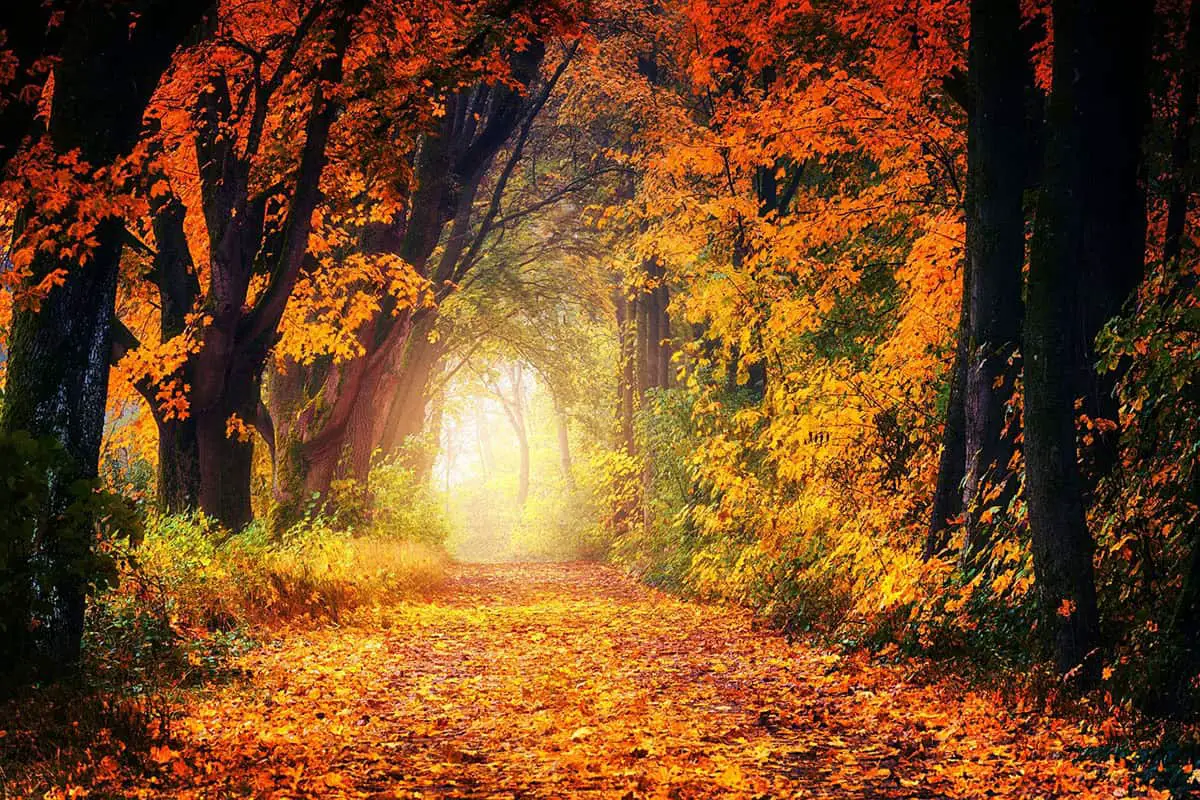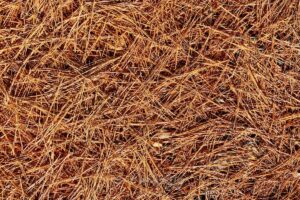This page may contain affiliate links. If you click and buy, we might get a small commission at no cost to you.
As fall approaches, certain trees begin to change color and shed their leaves earlier than others, signaling the shift in seasons. This quick article gives you some insights into the trees that typically start losing their leaves first and last. Starting with some trees that begin to change in early to mid-fall, ending with some that don’t until mid to late October.
Mid to Late September
During this period, a few early-changing tree species begin to show their fall colors. These trees typically stand out with their vibrant hues of red, yellow, and purple, marking the beginning of autumn. Found in forests, parks, and urban landscapes, these trees are often the first to signal the seasonal change.
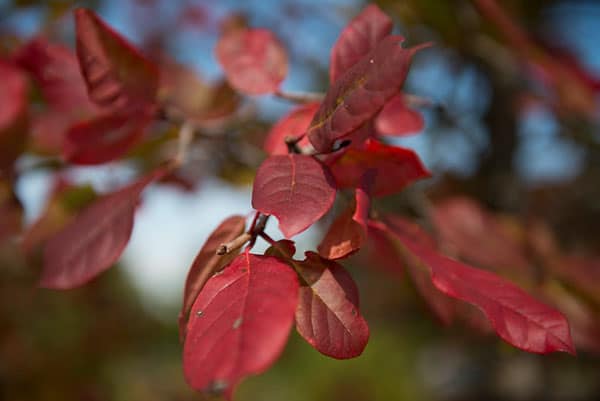
Blackgum (Nyssa sylvatica): One of the earliest trees to change color, Blackgum’s leaves turn vivid shades of crimson, purple, and orange.
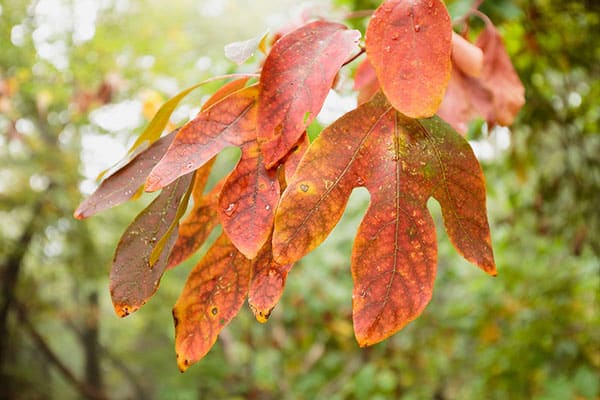
Sassafras (Sassafras albidum): Sassafras trees produce a stunning mix of red, yellow, and purple leaves, adding color variety to fall landscapes.
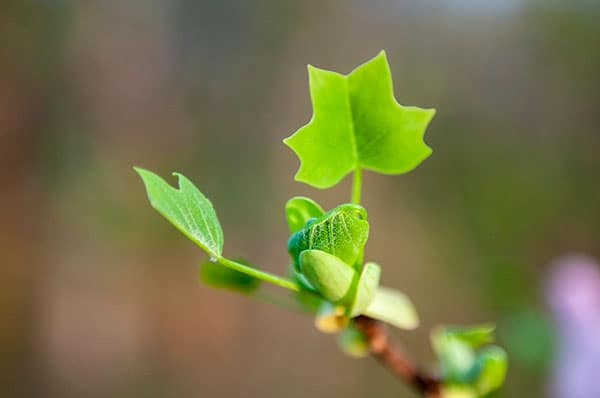
Tulip Poplar (Liriodendron tulipifera): The Tulip Poplar’s large, tulip-shaped leaves turn bright yellow by mid-September, contributing to early fall’s golden hues.

Red Maple (Acer rubrum): Red Maples are among the first maples to display fall colors, with leaves turning bright red, orange, and yellow.
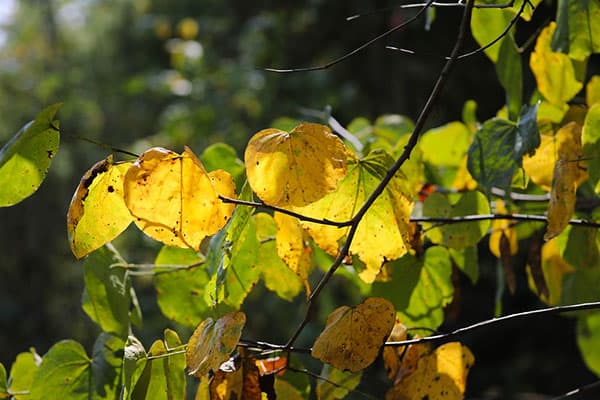
Eastern Redbud (Cercis canadensis): Known for its heart-shaped leaves, the Redbud turns a soft yellow in mid-September.
Late September to Early October
As fall progresses, more tree species join the early changers, transforming forests and parks with an explosion of vibrant colors. This period is marked by maples, hickories, and dogwoods, which paint the landscape with shades of yellow, red, and orange.
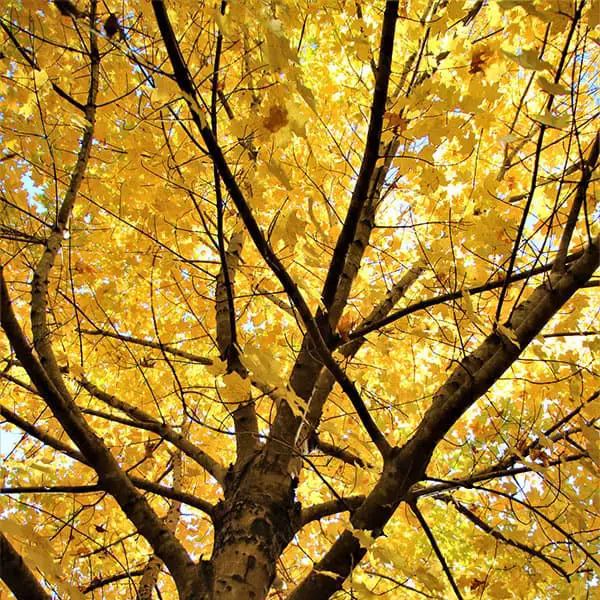
Sugar Maple (Acer saccharum): The Sugar Maple is famous for its brilliant orange and yellow foliage, which starts to appear in late September.
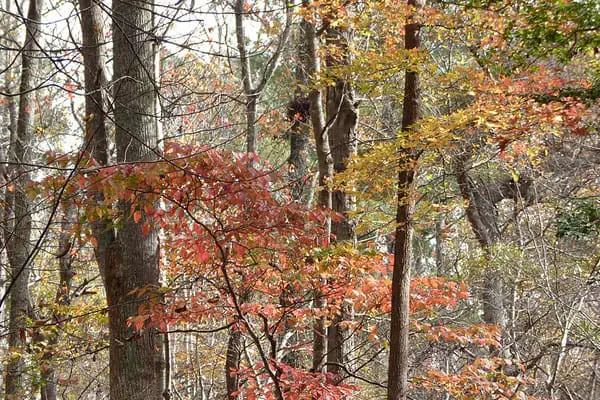
Flowering Dogwood (Cornus florida): The Dogwood’s leaves turn reddish-purple, adding a splash of color by the end of September.
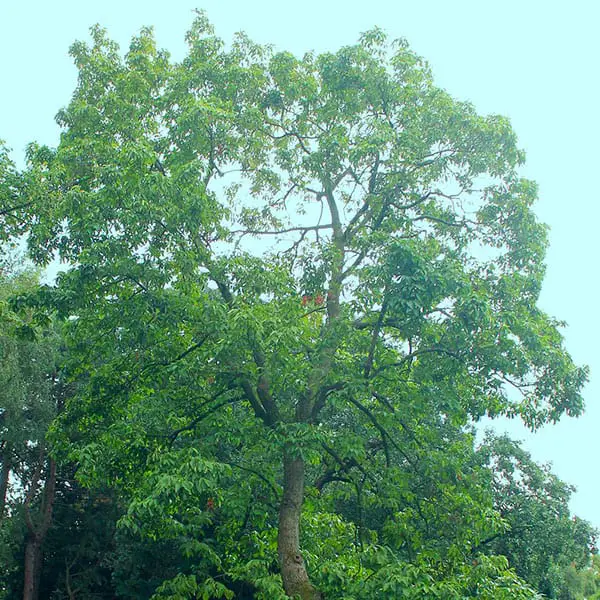
Shagbark Hickory (Carya ovata): Known for its distinctive peeling bark, the Shagbark Hickory’s leaves turn a striking golden-yellow.
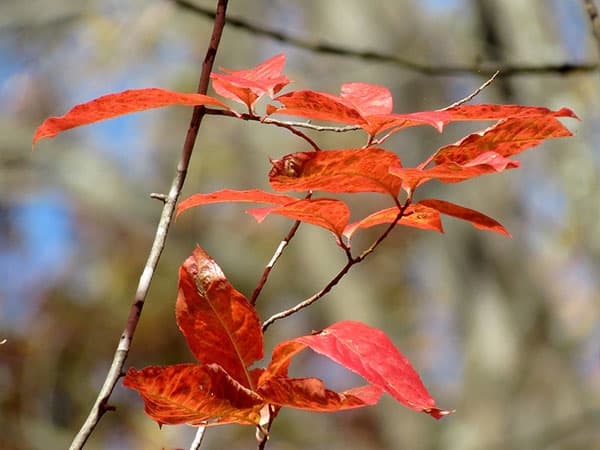
Sourwood (Oxydendrum arboreum): Sourwood trees show off rich red foliage in late September, contrasting against other trees’ yellows and oranges.
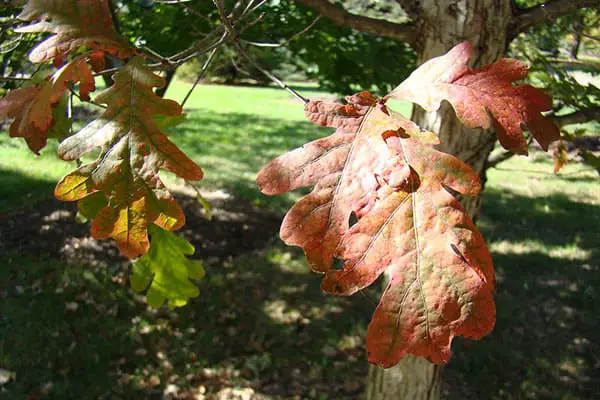
White Oak (Quercus alba): The leaves of the White Oak transition to a mix of red and brown during this period, contributing to the classic fall colors.
Early to Mid-October
By early October, the majority of trees are in full transition, with a vibrant display of colors spreading across the landscape. Sweetgums, beeches, and several oak species add diversity in both color and texture, with some trees holding onto their leaves longer as they turn.
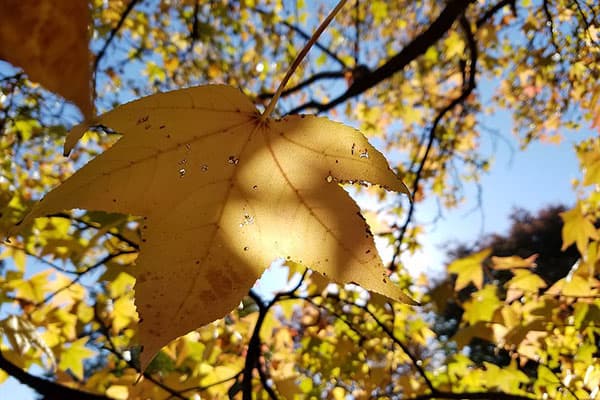
Sweetgum (Liquidambar styraciflua): Known for its star-shaped leaves, Sweetgum turns red, purple, orange, and yellow, creating a stunning color variety.
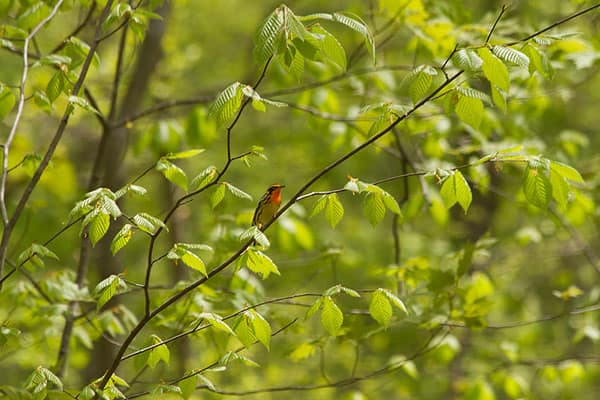
American Beech (Fagus grandifolia): American Beech trees turn a soft golden-yellow in early October, often retaining their leaves longer than other species.
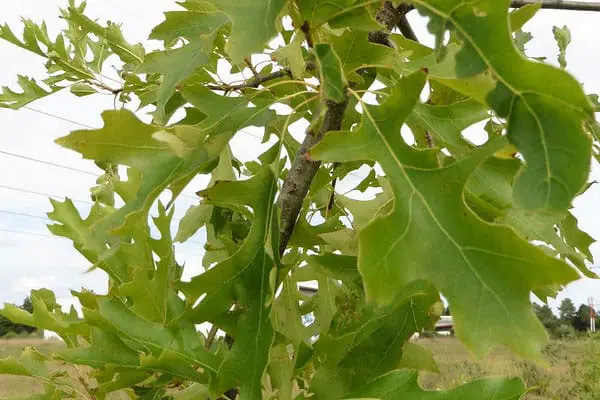
Red Oak (Quercus rubra): This oak species displays deep red and brown leaves in early to mid-October, adding rich tones to the fall palette.
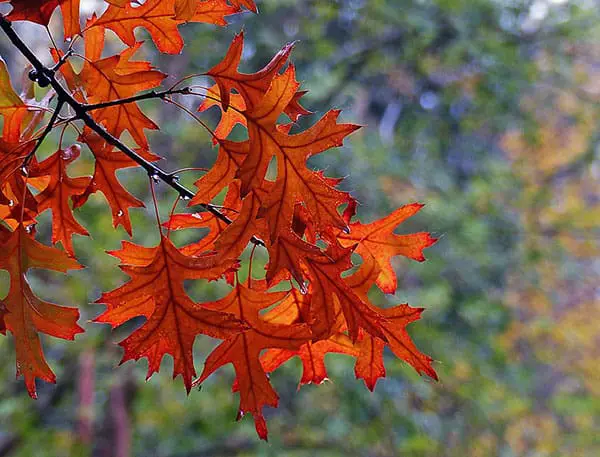
Pin Oak (Quercus palustris): Pin Oak leaves turn bronze to red, creating a striking contrast among other changing trees.

White Ash (Fraxinus americana): White Ash produces purple and yellow leaves, providing a unique blend of colors during early October.
Mid to Late October
As fall reaches its peak, some of the larger and more prominent tree species take center stage. Oaks in particular showcase their autumn colors during this period, with bright reds, deep browns, and golds dominating the landscape. By late October, many trees have fully shed their leaves, leaving behind an autumnal carpet of color.

Scarlet Oak (Quercus coccinea): The Scarlet Oak turns bright red in mid-October, offering one of the most striking displays of fall color.
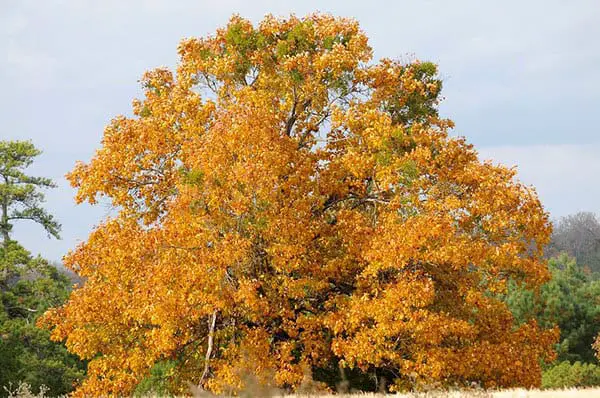
Black Oak (Quercus velutina): Black Oak leaves shift to a deep reddish-brown, providing a rich contrast to other fall hues.
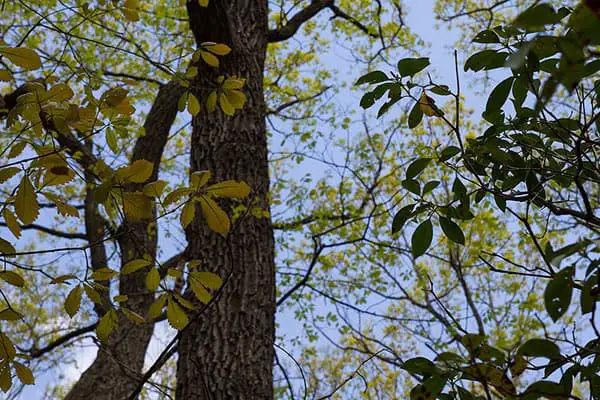
Chestnut Oak (Quercus montana): Chestnut Oak’s golden-brown leaves contribute to the earthy tones of late autumn.
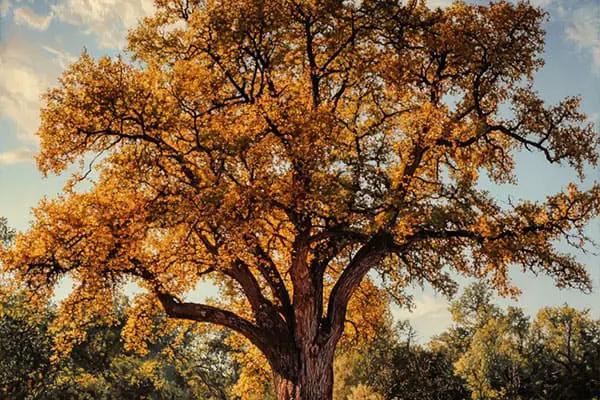
Post Oak (Quercus stellata): Post Oak leaves turn yellow and brown, adding to the warm, muted colors of late October.
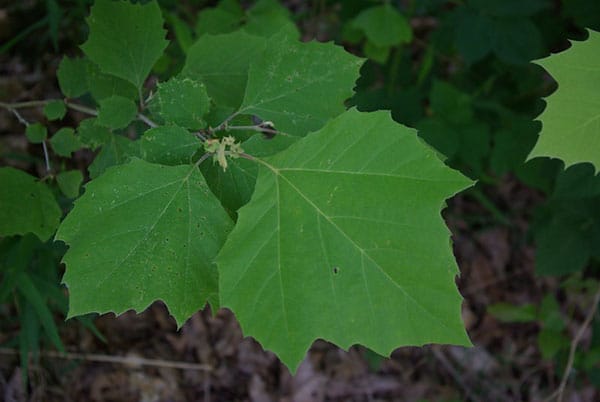
American Sycamore (Platanus occidentalis): Known for its broad leaves and striking bark, the American Sycamore’s leaves turn a golden-brown in mid to late October.
